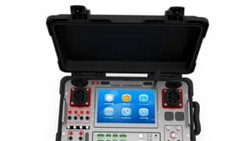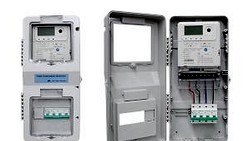This article intends to provide insights into advanced load monitoring technologies and address a common speculation about smart meters' capabilities. Specifically, there are rumours circulating suggesting that smart meters have the ability to detect which TV channel a person is watching. This article aims to clarify and provide a clearer understanding.
In general, a standard smart meter installed at a household level does not have the capability to identify or detect specific TV channels that a person is watching. Smart meters are primarily designed to measure and record overall energy consumption in real-time or at regular intervals. They monitor aggregate energy usage for the entire household, not individual devices or activities within the house.
Non-Intrusive Load Monitoring (NILM) technologies, on the other hand, aim to disaggregate the energy consumption data collected by smart meters to identify specific appliances or devices. However, while NILM can provide insights into the operation of various appliances, it typically does not have the capability to detect specific TV channels. The temporal energy consumption patterns from different devices might exhibit some uniqueness, but differentiating between specific TV channels based solely on energy consumption patterns is a highly challenging task.
What is NILM?
Non-Intrusive Load Monitoring (NILM) is a technology that allows for the disaggregation of electrical power consumption data into individual appliances or devices within a building or a home.
This is achieved by analysing the energy consumption patterns and unique signatures of each device, without the need for additional sensors or hardware connected directly to the appliances. The primary objectives of NILM are to promote energy efficiency, reduce energy consumption, and facilitate more effective demand-side management.
Applications of NILM in Energy Monitoring
- Energy Efficiency
NILM enables users to identify energy-guzzling appliances and provides insights for optimizing energy usage patterns, resulting in lower energy bills and reduced carbon emissions. - Fault Detection
By monitoring the energy consumption patterns of individual appliances, NILM can detect unusual behaviour that may indicate potential malfunction or failure, prompting preventive maintenance. - Demand-Side Management
NILM can help utility companies and consumers to better understand and manage their energy consumption, facilitating more effective demand-side management strategies and load balancing. - Integration with Smart Grids
As part of a smart grid system, NILM can assist in optimizing energy distribution and consumption, enhancing grid stability and performance.

(symbol image, credit CLOU)
Privacy Concerns
Despite its potential benefits, NILM raises concerns about user privacy due to the detailed information it can reveal about an individual's lifestyle, daily habits, and even occupancy status. These concerns include:
- Behavioural Profiling
The energy consumption patterns of appliances can indirectly expose personal information, such as daily routines and presence at home. - Data Leakage
Unauthorized access to NILM data can lead to the misuse of personal information by third-party entities, increasing the risk of identity theft or targeted advertising. - Surveillance Concerns
Government agencies or other organizations may use NILM data to monitor individuals without their consent.
Overcoming Privacy Challenges
To address these privacy concerns and ensure data privacy, we believe that several strategies can be employed:
- Data Anonymization
Anonymizing the NILM data by removing personally identifiable information (PII) can help protect user privacy while still enabling the analysis of energy consumption patterns. - Data Aggregation
Aggregating NILM data at a higher level, such as at the community or neighbourhood level, can reduce the risk of individual profiling while still providing useful insights for energy efficiency and demand-side management. - Secure Data Storage and Transmission
Implementing advanced encryption and authentication techniques during data storage and transmission can minimize unauthorized access and data leakage. - Opt-in/Opt-out Mechanisms
Providing users with the option to opt-in or opt-out of NILM data collection can help them maintain control over their data and privacy. - Comprehensive Privacy Policies
Clearly outlining how the collected NILM data will be used, stored, and shared can help build trust between users and service providers while ensuring compliance with data protection regulations.
Current Status and Challenges
NILM technology has progressed significantly, thanks to advancements in machine learning, signal processing, and pattern recognition. However, challenges still persist. Accurately disaggregating appliances with similar energy signatures or those with varying power consumption remains a complex task. Ongoing research focuses on refining algorithms and incorporating additional data sources, such as environmental sensors, to further enhance accuracy.
Despite these challenges, NILM has gained recognition and adoption in various domains. Organizations, utilities, and governments around the world are exploring its potential. Notable initiatives, such as the NILM Competition and NILM research projects, foster collaboration and innovation to push the boundaries of this technology.
However, privacy concerns remain a challenge. The ability to infer specific activities or habits from energy data raises questions about user privacy and potential misuse of data.
Development Status
It is evident that current smart meters do not possess the capability to fulfil the necessary requirements for Non-Intrusive Load Monitoring (NILM) data. Nevertheless, the Fraunhofer Institute in Germany, with the consortium leadership and sponsorship of the Federal Ministry for Economic Affairs, has conducted research in this area and has made the following significant findings:
- Sampling Rate
The prototype smart meter developed by Fraunhofer IMS in cooperation with partners measures 8,000 high-frequency measurement points (current and voltage) per second. This indicates a very high sampling rate, which enables capturing detailed changes in the overall power consumption. - Load Detection
The high-resolution data obtained from the prototype smart meter allows for the detection of even the smallest changes in power consumption and assigning them to individual devices/appliances. This demonstrates that the prototype fulfils the requirement of accurately identifying and disaggregating loads. - Algorithm Development
In 2016, the first version of the NILM algorithms was tested. These algorithms have since been continually developed using machine learning techniques for pattern recognition. This highlights the importance of advanced algorithms in NILM to analyse the high-resolution data gathered by the prototype smart meter. - Analysis of Power Parameters
Besides effective power, the impact of reactive power, apparent power, and harmonics on detection quality has been examined. This suggests that the smart meter's capabilities extend beyond just measuring effective power, ensuring a comprehensive analysis of different power parameters to improve the accuracy of load identification. - Verification and Quality Assurance
The algorithms' performance is continuously monitored and verified against real-world measurements (Ground Truth) to guarantee the highest possible detection quality. This implies a focus on quality assurance and a commitment to delivering reliable NILM results.
The Future of NILM
Maintaining privacy while leveraging the benefits of NILM is crucial. Nevertheless, with the growing emphasis on energy efficiency and sustainability, the future of NILM appears promising. As technology advances, the accuracy and reliability of NILM algorithms will continue to improve. Integration with smart grids, IoT devices, and energy management systems will enable seamless, real-time analysis and control of energy consumption.
Potential developments include enhanced anomaly detection for identifying appliance malfunctions or short-circuits, optimization of demand response strategies, and the integration of NILM into home automation systems. These advancements will empower consumers, utilities, and businesses to make informed decisions, reduce energy waste, and contribute to a greener future.
Takeaway
While NILM technology has the potential to significantly improve energy efficiency and management, it is vital to address the associated privacy concerns. By implementing robust data privacy measures and adopting a transparent approach to data collection and usage, the benefits of NILM can be realized without compromising user privacy.
Our company is closely monitoring all the latest innovations and advancements in the energy sector. When it comes to Non-Intrusive Load Monitoring (NILM) technology, we anticipate that there will not be a widespread implementation of this technology in the next three decades. However, we recognize the importance of keeping utilities, power companies, and private users well-informed about NILM and its potential.
If you have any inquiries regarding our present smart meters and system solutions, please do not hesitate to reach out to us. We also welcome any comments or thoughts you may have on the subject.
Editor's note: This article was originally published in July 2023 and has been updated for comprehensiveness.





Hi, NILM team
How are you?
I have carefully reviewed this article.
I am very interested in NILM algorithm.
If you are available about this, please contact me.
I am looking forward to this opportunity.
Best regards, James.
Hi James,
Thank you for your comment and your interest in Non-Intrusive Load Monitoring (NILM) technology. While NILM algorithms are indeed a fascinating area of research, it's important to consider the practical implementation and challenges associated with this technology.
When it comes to the widespread implementation of NILM, we anticipate that it may take some time. The existing smart grid infrastructure is not yet prepared and capable of delivering the necessary parameters required for successful NILM implementation. This is partly due to the absence of standardized protocols and privacy concerns that need to be addressed.
However, it's worth noting that the energy sector is constantly evolving, and advancements in technology and infrastructure are being made. As the industry moves towards greater digitization and data integration, we may see further progress in the adoption of NILM technology in the future.